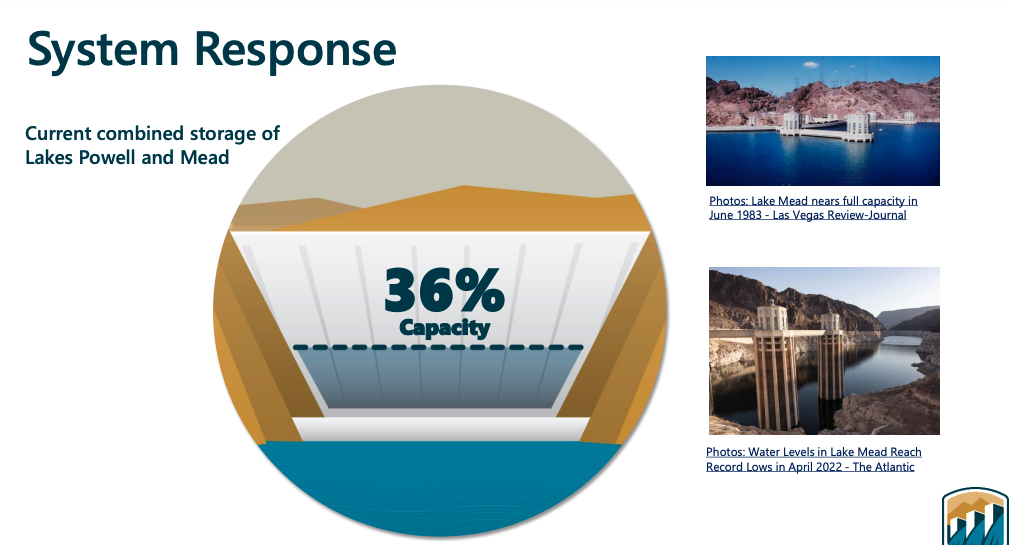LAS VEGAS (KTNV) — Federal officials are working on putting together new plans to protect the stability and sustainability of the Colorado River system.
On Thursday, the Bureau of Reclamation published the Proposed Federal Action and a nearly 400-page Scoping Summary Report on how river operations will run after 2026. Current operating guidelines were created in 2007 and are set to expire.
"The Colorado River Basin has come together over the past year to create a consensus path in the short term that now allows us to focus on the future," said Reclamation Commissioner Camille Calimlim Touton. "As the range of alternatives is developed, Reclamation is committed to a collaborative, inclusive and transparent process with our partners, stakeholders and the public."

RELATED LINK: Water panel talked key issues in Colorado River basin states
According to the Bureau, officials are working to identify circumstances where the Secretary would allocate to reduce or increase the annual amount of water available for consumption use from Lake Mead to Arizona, California, and Nevada as well as coordinated operations of Lake Powell and Lake Mead, particularly under low reservoir conditions, and how to store and deliver conserved water in Lake Mead and Lake Powell to increase the flexibility to meet water use needs from both reservoirs.
In the Scoping Summary Report, officials said some changes are needed to current guidelines since they "have not sufficiently reduced risk" and are not "robust enough to manage in a way that is sufficiently protective of the resources dependent on the Colorado River."
The report used Glen Canyon Dam as an example saying "despite continuous drought-response actions in recent years, low-reservoir conditions have persisted and infrastructure risks have arisen."
Bureau officials also stated they need to expand conservation measures with guidelines on how to store and delivery water from Lake Mead and Lake Powell as well as address tribal concerns that current river management is "insufficient to address the range of interests, needs, and fundamental rights of the Basin Tribes."
RELATED LINK: Nevada to be allocated more water as past wet winter helps improve water storage

RELATED LINK: Federal officials address drought at Colorado River conference
Federal officials have been hosting sessions asking for public feedback on ways to better utilize the river and resources to protect it.
Looking at next steps, Bureau officials said they're working on developing operational alternatives by Reclamation, partners, and stakeholder, which is scheduled to be worked on through the spring. From spring to fall 2024, officials will prepare and draft an Environmental Impact Statement. In December 2024, they're scheduled to publish the EIS draft and public the final EIS and record of decision sometime in 2025 or 2026.

RELATED LINK: State, local leaders looking on how to better manage resources from Colorado River in 2027 plan
The Bipartisan Infrastructure Law, which was signed into law in Nov. 2021, set aside $8.3 billion over five years for water infrastructure projects while the Inflation Reduction Act, which was signed into law in Aug. 2022, set aside an additional $4.6 billion to address drought issues.
Some of that funding is going towards projects like $500 million for dam safety to focus on construction and maintenance of 12 dams, $300 million to implement the Colorado River Basin Drought Contingency Plan, and $71 million for 32 drought resiliency projects to expand access to water through groundwater storage, rainwater harvesting, aquifer recharge and water treatment.





